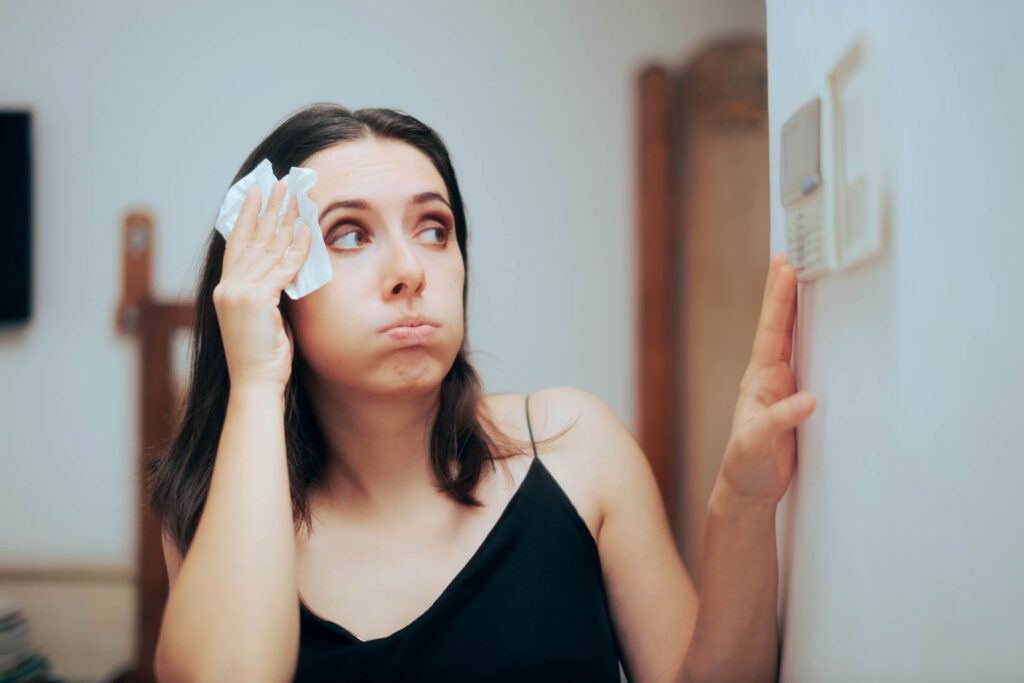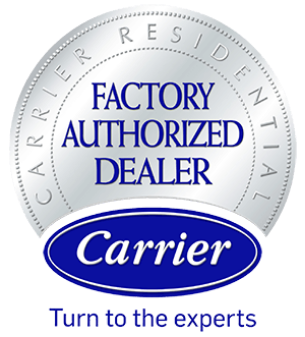When an air conditioner stops cooling, it can turn even a comfortable home into a source of frustration. AC cooling issues are often caused by common and fixable problems such as dirty air filters, thermostat errors, low refrigerant, or blocked condenser units. Understanding these typical air conditioner not cooling problems can save time, prevent unnecessary expenses, and help keep indoor spaces comfortable.
Many of the most frequent causes—like a clogged air filter or dirty coils—are easily resolved with regular maintenance, while others might require simple troubleshooting or a professional check. People experiencing poor performance from their AC system can often restore comfort by pinpointing the issue and applying targeted solutions.
Knowing what to look for and how to respond can give homeowners confidence in handling basic cooling problems. For a detailed look at these 7 common reasons and practical steps to fix them, this post provides clear guidance and tips, addressing both simple and complex AC cooling issues.
Why Is My AC Not Cooling? Common Reasons Explained
Many homeowners experience issues with air conditioners not cooling as expected. The leading causes are often straightforward and can be identified by looking for specific warning signs.
Dirty Air Filters
Dirty air filters restrict airflow, making it harder for the AC system to circulate cool air throughout the space. This issue often leads to uneven cooling and can cause the system to run longer, increasing energy use. When an air filter is clogged with dust and debris, less air passes over the evaporator coil, reducing the unit’s cooling efficiency.
Neglecting to replace or clean air filters can also cause the evaporator coil to freeze, further reducing performance and potentially leading to more expensive repairs. Regular inspection and replacement of filters, typically every 1-3 months, is a simple but important air conditioning troubleshooting step.
Homes with pets, smokers, or high dust levels may need more frequent filter changes. Clear filters also help improve indoor air quality by trapping pollen and allergens that otherwise circulate in the air.
Refrigerant Issues
Air conditioner refrigerant is essential for removing heat from indoor air. If refrigerant levels are low due to a leak or the system was never properly charged during installation, the AC cannot effectively cool. Low refrigerant often causes symptoms like warm air blowing from vents, longer cooling cycles, or ice forming on the evaporator coil.
Technicians can check refrigerant levels, locate any leaks, and recharge the system as needed. Addressing refrigerant problems promptly is important because running an AC with low refrigerant can damage the compressor.
Spotting oil stains around fittings or hearing hissing sounds may indicate a leak. A qualified professional is needed for these repairs, since handling refrigerant requires specialized certification and tools. Refrigerant leaks are among the most common reasons for poor AC cooling.
Faulty Thermostat
A faulty thermostat can prevent an AC from cooling even if the rest of the system works correctly. When a thermostat malfunctions, it may fail to signal the air conditioner to turn on or off at the right times, causing rooms to remain uncomfortably warm.

Common signs of a faulty thermostat include the display not working, incorrect temperature readings, or frequent cycling of the AC. Sometimes, the thermostat may just need new batteries or recalibration. Other times, wiring issues or sensor malfunctions require replacement.
Modern programmable thermostats can also develop software problems. Replacing an old or problematic thermostat is a relatively simple air conditioning repair that can restore proper cooling and improve efficiency. Keeping the thermostat away from direct sunlight or heat sources helps ensure accurate temperature readings.
Blocked Condenser Unit
The condenser unit, usually located outside, plays a key role in releasing heat absorbed from the indoor air. When it becomes blocked by dirt, leaves, or debris, airflow is restricted, causing the AC to lose efficiency and struggle to cool the home.
A blocked or dirty condenser coil makes it harder for refrigerant to release heat, leading to higher pressure and temperature inside the unit. Over time, this can result in compressor overheating or system shutdown.
To prevent these problems, homeowners should regularly check and clear vegetation or debris from around the condenser. Cleaning the coils gently with water, taking care not to bend the fins, helps maintain performance. If airflow around the condenser remains blocked after cleaning, professional service may be needed to ensure the unit operates optimally.
Less Obvious Causes of AC Cooling Problems
Some air conditioning issues are hard to detect at first glance. Problems like drainage blockages, electrical faults, or an inadequate system size often lead to cooling failures that are difficult to diagnose without closer inspection.
Clogged Drain Line
When the AC’s drain line becomes clogged, excess moisture has nowhere to go. This backup can trigger a built-in float switch to shut down the cooling system as a safety measure against water damage to the property. Persistent humidity or visible water pooling near the unit are key indicators.
Mold and algae commonly block drain lines, especially in humid climates. Neglecting regular cleaning allows these blockages to develop. Homeowners should follow safe cleaning methods or consult a technician if water leaks are found around the air handler.
A simple prevention checklist includes:
- Flushing the line with vinegar every few months
- Checking for standing water near the unit
- Monitoring for musty odors or higher indoor humidity
Electrical Problems
Faulty wiring and failing electrical components are serious but often overlooked issues. Fuses, relays, and capacitor failures prevent parts like the compressor or fan from receiving correct power. Erratic cooling or a unit that cycles on and off unexpectedly may indicate such problems.
Professional diagnosis is critical because handling electricity requires proper safety measures. Homeowners should look for signs like a burning smell, frequent tripped breakers, or an unresponsive AC unit. Immediate repairs reduce equipment damage and minimize unsafe conditions.
Many modern thermostats and control boards can also malfunction. If the AC appears to start but never cools effectively, a deeper inspection of the electrical system could pinpoint the cause.
Undersized System
An AC unit that is too small for a home cannot keep up with cooling demands. This results in long run times yet struggles to reach the set temperature. Insufficient capacity is common in older homes with added space or improper initial installation.

Symptoms of an undersized system include:
- Constant operation, rarely shutting off
- Inability to maintain comfortable temperatures during peak heat
- Uneven cooling with warm spots throughout the house
Homeowners may notice rising energy bills as the AC works overtime. Proper sizing involves calculating the load based on square footage, insulation, window area, and climate. Upgrading to a correctly sized unit restores cooling efficiency and comfort..
How to Diagnose and Fix AC Issues
Accurate air conditioning troubleshooting begins with careful observation and a methodical approach. Regular HVAC maintenance also plays a central role in preventing system failures and improving system lifespan.
Step-By-Step Troubleshooting Guide
Start by checking if the thermostat settings are correct and make sure it is set to “cool.” Inspect the air filter for dirt or clogs; a dirty filter can block airflow and reduce cooling.
If the AC is running but not cooling, check the outdoor condenser unit. Make sure it is free from debris and the fan is spinning. Listen for unusual noises from the compressor or fan, as these may indicate mechanical issues.
Check the circuit breaker to confirm it hasn’t tripped. Examine visible wiring for damage, but avoid handling electrical components without proper training. Look for signs of a refrigerant leak, such as ice buildup on coils or hissing sounds.
Reset the system by turning it off for several minutes and restarting it. If problems persist, consult a certified technician for a more detailed diagnosis.
Routine HVAC Maintenance Tips
Change the air filter every 1-3 months, especially during peak use in summer. Clear leaves and dirt from around the condenser unit, ensuring at least two feet of open space for airflow.
Schedule professional HVAC maintenance annually to have coils cleaned, refrigerant levels checked, and moving parts lubricated. Clean air vents inside the home and verify that all registers are open and unobstructed.
Inspect the thermostat batteries and settings periodically. Tighten any loose connections on accessible panels. Following these steps helps ensure system efficiency and can prevent many common AC problems.
When to Call a Professional for AC Repair
Some air conditioning problems can be solved at home. Others need immediate attention from a qualified technician for both safety and effective long-term fixes.
Identifying Serious AC Problems
If an air conditioner begins making loud grinding, screeching, or rattling noises, this usually signals a significant fault—such as failing motors or loose parts—that can’t be ignored. Strange or sudden odors, particularly burning or musty smells, may indicate electrical issues or mold inside the system.
Weak or warm airflow, repeated short cycling, ice forming on the AC’s coils, or a complete system shutdown all point to failures that go beyond routine cleaning. When these issues are left unresolved, they can cause further damage to critical components.
Other problems that call for Air Conditioning Repair include refrigerant leaks, non-functioning thermostats, or water pooling around the unit.
Contact Service Air Eastern Shore
Contact Us promptly if serious symptoms occur, or if troubleshooting doesn’t resolve the cooling problem. Service Air Eastern Shore specializes in diagnosing complex failures, such as electrical faults, damaged fans, or blocked refrigerant lines.
Professional assessment is vital for any work involving refrigerant, electrical wiring, or sealed components due to safety and environmental concerns. The team at Service Air Eastern Shore has the proper certifications and tools for these tasks.
We offer fast responses and long-lasting solutions that go beyond quick fixes. Scheduling a service call can help avoid further system damage and restore cool comfort promptly.





